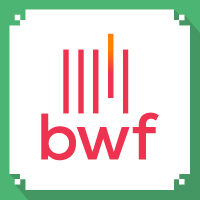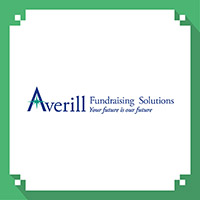Benefits of Having an Annual Fund
For Nonprofits
Provides unrestricted funds
Other fundraising efforts, like capital campaigns, are limited by their purpose. Annual funds are general fundraising campaigns, meaning that the money can be used for anything!
Establishes giving patterns
Since annual campaigns occur every year, donors usually give around the same time. This helps nonprofits know when supporters will donate and roughly how much they will give.
Increased donor participation
Most donors who give regularly to nonprofits do so by contributing to the annual fund each year. As the years go by, donors become more involved and connected to the nonprofit, ensuring future donations in the process.
Keep donor data updated
As donors continue to give to your annual fund, your nonprofit is able to keep up with their ever-changing lives. If someone moves or gets married, you can use your annual fund solicitations to update their info!
Reinforces your mission
An annual fund is all about raising money to help your organization keep doing what you do best: serving communities, individuals, or animals. Your organization’s mission is front and center during an annual campaign.
Identifies upgradable donors
Those who give to your annual fund every year obviously have a strong connection to your nonprofit. Because of their annual commitment, you can identify which donors need to be upgraded to a higher giving level.
For Donors
Tax deductions
Donors who give charitably are able to claim deductions on their tax returns. This is the most practical of advantages for a donor who wishes to give to a nonprofit’s annual fund, and it’s one of the reasons many people donate each year.
Sense of belonging
Some nonprofits create annual fund societies or membership programs for donors who have consistently given over the years. These societies can foster a sense of belonging among donors and encourage them to keep giving to the fund.
Philanthropic Pride
Each time a donor contributes to your annual fund, they not only help the communities, people, and animals that you serve, they also feel a sense of philanthropic pride. This can encourage donors to give to your annual fund in the future, as well.
Strengthened nonprofit relationships
Each time a donor contributes to an annual fund, they are strengthening the existing relationship they have with that nonprofit. Instead of feeling like a business transaction, a supporter’s donation feels more like a pledge of support.
6 Common Components of an Annual Fund
6 Steps for Running a Successful Annual Giving Campaign
1. Set a Goal
Setting a goal is crucial for your annual campaign’s success. If you don’t know how much money you need to raise, you’ll never be able to track your fundraising progress.
You can set an overall, total goal to work toward and have several monthly check-ins to make sure that you’re meeting (or even exceeding!) your fundraising goals.
You might even want to set separate goals for each outreach method. Maybe you want to try to receive at least half of your donations online. Or maybe you anticipate that 25% of all of your fundraising dollars will come from phone solicitation.
Make your goals as granular as you would like. Just make sure you keep them in mind whenever you’re fundraising!
2. Create a Calendar
Creating a calendar for your annual campaign will help all of your staff members and volunteers stay on the same page as they ask for donations and steward your donors.
A sample calendar might look something like this:
- January-June: This is the second best time to ask for donations. If your nonprofit has a designated month, week, or day associated with it during this time, now is the time to emphasize it.
- June-September: Prepare for year-end appeals. Summer months are the worst time to ask for donations, but that doesn’t mean you should put your annual fund on the back burner. Use this time to prepare for #GivingTuesday and steward the donors that gave during the first 6 months.
- September-December: This is when your nonprofit should place a heavy emphasis on donation appeals. The last few months of the year (November and December in particular) are when people are the most charitably-minded. They also have a better handle on their finances, meaning your nonprofit can ask for donations with a high chance of success.
3. Examine Your Existing Donor Base
The best way to prepare for your annual campaign is to research your existing donor base to determine where you need to target your fundraising efforts.
For instance, if you have donors that are lapsed and haven’t given in over a year, you should reach out to re-establish the connection.
Additionally, this is an opportune moment to update your database. If you have outdated info, it isn’t going to do you much good when you’re sending out emails and letters.
Clean up your database to start your annual campaign off on the right foot!
4. Take a Look at Your Communications Strategy
In addition to examining your existing donor base, you’ll also need to take a look at the communication strategies you plan on using for your annual campaign.
If you have a decent grasp on how your supporters like to be contacted, use that as a guide for your annual campaign.
For instance, if your donors respond well to digital communications, you know you don’t need to spend a ton of money on direct mail.
If you don’t know your donors communication preferences, the best way to find out is to ask them. When you send out initial contact or welcoming packets, include a short survey that asks donors how they’d like to be contacted.
As your annual campaign progresses, you’ll have a better sense of which donors respond favorably to certain communication strategies.
5. Acknowledge & Follow Up
Once you’ve received donations, your nonprofit needs to immediately thank your supporters.
Stewardship is crucial for year-over-year fundraising success. If you treat your donors like ATMs instead of individuals, it’s highly unlikely that they’ll give to your organization in the future.
To prevent this, thank donors in some way within 48 hours of a donation being made. You can send acknowledgement letters or emails or even give donors a call!
Then, send a follow-up communication a few weeks or months later. Keep your organization fresh in your donors’ minds.
However, you shouldn’t bombard donors with messages; they’ll start to tune you out eventually.
Instead, send occasional messages through a variety of channels. Maybe you sent an email acknowledgment. Follow up with a letter and reach out a few months later on social media.
Find what works for your nonprofit and your donors and you’ll be able to receive donations year after year.
6. Track Your Data
You should be continuously tracking your donor retention and acquisition numbers, but there are some other key performance indicators (KPIs) that you should pay attention to as well:
- Average gift size
- Number of total donations made
- Number of donations made per supporter
- Donation size growth
- Number and amount of matched gifts
Keeping track of these data points will help your organization track against your goals. It will also prepare you for next year’s annual fund!
Getting Started With Your Annual Giving Campaign
Resources Needed for a Successful Annual Fund
Board Buy-In
Everyone in your nonprofit needs to be on the same page when it comes to your annual fund. That buy-in starts with your board members.
In order for your annual campaign to be successful, your board must place their stamp of approval on your theme (when applicable), financial goal, and messaging strategies.
Having your board on board will help the rest of your nonprofit’s staff and volunteers stay committed to the annual campaign when your months into fundraising.
Volunteer Participation
An annual fund is an ongoing fundraising process, and if you’re part of a smaller nonprofit organization, that can seem like a daunting task.
You might by wondering how your staff can raise a large amount of money over the coming months. Well, you won’t have to do it alone if you have volunteers.
Recruit volunteers to help out with your fundraising efforts in a variety of ways. From setting up at events to running a phonathon, you’d be surprised what your supporters can accomplish when you develop an engaging volunteer program!
Financial Goals
An annual fund isn’t just a vague fundraising effort that requires your nonprofit to constantly be asking for donations from your supporters.
You still need to have a financial goal in order to be successful! Some organizations set a yearly goal while others have monthly or quarterly progress check-ins.
Setting a goal early on will be the key to your nonprofit’s fundraising triumph. Having a goal in mind while you ask for donations will help assess your progress.
Communications Strategy
Since your annual campaign will encompass more than a few communication methods, you’ll need to establish what those are from the start.
If your donors overwhelmingly prefer digital communications, you can determine that it won’t be wise to spend a lot of money on direct mail letters or pamphlets.
On the other hand, if you have more traditional donors, then you should place an emphasis on direct mail. Look at your previous campaigns to see what works!
Best Practices for Annual Fund Appeals
Tell A Compelling Story
The whole purpose of an annual appeal is to make donors aware of your needs and inspire them to give regularly, but you can’t achieve any of these goals unless supporters read your message. Opening your letter with an emotional hook is a surefire way to draw your supporters in and get them interested in learning more.
Use the stories of the people and communities you serve to put supporters in their shoes. Or you can highlight the accomplishments you were able to achieve because of your regular donors.
Be Specific About What You Need
Now that you’ve got your donors interested in what you have to say, it’s time to make your ask. Transparency is key when it comes to writing your annual appeals. Remember to explain why annual giving is such a vital part of your nonprofit’s mission and provide a few suggested giving amounts so potential donors know what you expect.
Along with your giving levels, it’s also crucial to emphasize the impact that each giving level will have.
Provide Ways to Give Online
Last, but certainly not least, you need to provide interested supporters with ways they can give to your organization. Whether you’re sending your annual appeals via email or direct mail, you should always include instructions on how to give through text messages.
Keep in mind: you don’t want to bury your donation form or text-to-give instructions in the body of your message. Place them in a prominent location like at top and bottom of your letter.
Importance of Segmentation During an Annual Fund
Donors can be segmented by
Segmentation is crucial for annual fund success. If you send out the same message to all of your donors, it is highly unlikely that they will all respond with a donation. Instead, segment your donors according to giving preference, communication channel, relationship with your nonprofit, and more!
Why Hire an Annual Fundraising Consultant?
Annual fundraising campaigns can be a real challenge for nonprofits, whether you’re new to campaign planning or an expert fundraiser.
Before launching your next annual fund campaign, consider hiring a fundraising consultant to help plan or lead your annual campaign.
By partnering with an annual fund consultant, your team can benefit from their extensive and diverse fundraising experience.
Even better, bringing a third-party into your fundraising process can offer your organization a fresh fundraising perspective.
Instead of relying on what’s worked well enough in the past, your annual fundraising consultant can lead the way for your team in discovering new strategies that help you get closer to your goals.
Not only that, but partnering with an annual fundraising consultant is a great way to build capacity and strengthen relationships with your community that you’ll rely on for other campaigns down the line.
Think an annual fundraising consultant would be an excellent fit for your cause? Check out these three top-tier annual fund consulting firms to get inspired.
BWF
BWF offers solutions for nonprofits including healthcare institutions, public and human services organizations, and universities looking to take their annual fundraising efforts to the next level.
With a focus on strategic planning, improving internal operations, and growing donor engagement programs, BWF helps nonprofits build the internal capacity needed to exceed their fundraising goals.
Its strong focus on data-driven solutions gives your organization access to research-backed strategies that increase ROI. These solutions include custom modeling, segmentation, source analysis, and analytics training.
BWF’s expertise has helped countless clients achieve success with multi-million dollar campaigns.
Averill Fundraising Solutions
If your team is ready to take on a full-scale annual fundraising campaign, there’s no better partner than Averill Fundraising Solutions.
With their expert campaign planning and leadership services, your nonprofit can get started planning its most effective annual fundraising campaign yet.
Averill Fundraising Solutions is focused on capacity building, so they’d be the perfect partner for nonprofit organizations that are excited to challenge themselves in order to grow.
After your annual fundraising campaign closes, this firm also offers capital campaign consulting, leadership learning courses, and a whole host of other services designed to maximize your nonprofit’s potential.
Aly Sterling Philanthropy
Need a full-service consulting firm to take charge of your annual fundraising? Consider Aly Sterling Philanthropy.
Their firm has helped nonprofits across the nation raise millions for annual fundraising campaigns, capital campaigns, and more.
Further, Aly Sterling Philanthopy offers all of the essential consulting services your nonprofit needs. These include strategic planning, executive search, and board governance.
When your nonprofit needs a consultant to lead the way, Aly Sterling Philanthropy will be there by your side.
Annual Campaigns and Matching Gifts
Corporate Matching Gifts
Corporate matching gifts programs are commonly paired with annual campaigns to help donors’ dollars go even further.
Once a donor gives, they must submit paperwork to their employer to request a matched donation. The nonprofit then receives another donation of the same amount from the donor’s employer.
Matching gifts are a great way to help your donors give a bit more without asking them to open their wallets a second time!
Anonymous Matching Gifts
Anonymous matching gifts can be used for any kind of fundraising campaign, but they are common during an annual fund.
With anonymous matching gift programs, an unnamed donor promises to match donations (up to a certain amount) that are made during the nonprofit’s annual campaign, doubling any and all donations that come in.
Anonymous matching gifts are great ways for major gift donors to show their support and double other supporters’ donations.
How Fundraising Software can Help with your Annual Campaign
Automated Asks
While you obviously want all of your appeals to feel personal, you can’t possibly type up thousands of emails and send them to individual donors.
Fundraising software can help automate and streamline this process, freeing up more of your staff’s time for cultivation and stewardship.
Automated Acknowledgements
All of your donors (especially those who make online donations) should receive an automated donation acknowledgement and receipt.
You can still personalize this thank-you email by including the donor’s name and referencing previous donations or involvement.
Prospect Research
Prospect research is an invaluable fundraising tool. It allows you to learn more about your existing donors and target major gift and planned giving prospects.
When it comes to your annual fund, prospect research can help you fill in the blanks to ensure that your messages are getting to the right donors.
Data Reporting
Data reporting should come standard with any fundraising software. Whether it’s text-to-give software or an online donation form, data reporting is crucial.
Data that is pulled straight from your fundraising avenues makes goal tracking that much easier. Your nonprofit doesn’t have to manually log data!














